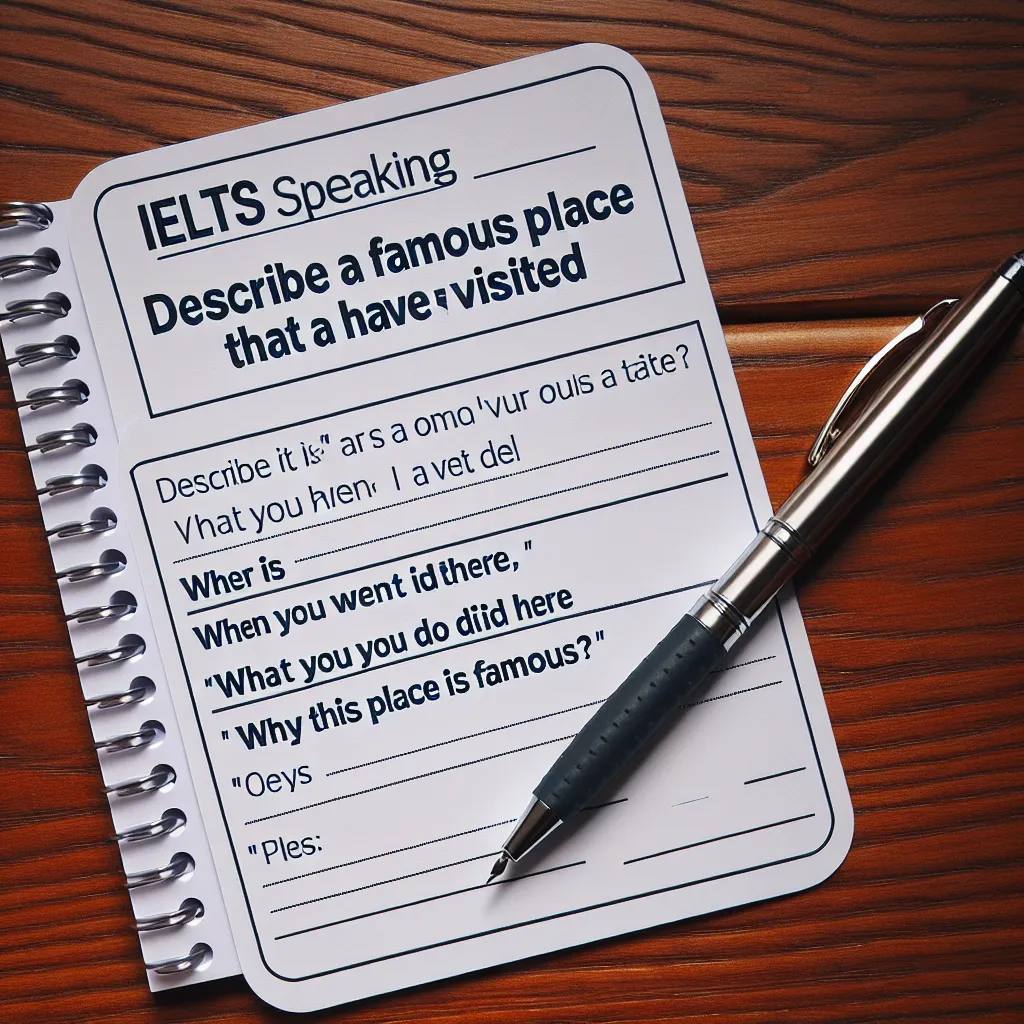As an experienced IELTS Speaking examiner, I’ve seen many candidates struggle with this topic. However, with the right approach, you can impress the examiner and boost your score. In this article, we’ll explore effective strategies for answering questions about teaching a younger person something new, a common theme in IELTS Speaking tests.
Nội dung bài viết
- Understanding the Topic
- Part 1: Introduction and Interview
- Q: Do you enjoy teaching others?
- Q: What’s the most important quality for a teacher to have?
- Part 2: Long Turn (Cue Card)
- Sample Answer (Band 8-9)
- Follow-up Questions
- Part 3: Two-way Discussion
- Q: How has technology changed the way young people learn new skills?
- Q: Do you think the ability to teach is innate or can it be learned?
- Key Vocabulary and Phrases
- Tips from an IELTS Examiner
 IELTS Speaking Test
IELTS Speaking Test
Understanding the Topic
The topic “Describe a time when you showed a younger person how to do something new” is a popular one in IELTS Speaking tests. It allows examiners to assess your ability to:
- Narrate a personal experience
- Explain a process
- Express emotions and reactions
- Use appropriate vocabulary related to teaching and learning
This topic is likely to appear in Part 2 of the Speaking test, where you’ll be given a cue card and asked to speak for 1-2 minutes. However, related questions might also come up in Parts 1 and 3.
Part 1: Introduction and Interview
In Part 1, the examiner might ask some general questions about teaching and learning. Here are some possible questions and sample answers:
Q: Do you enjoy teaching others?
Band 6-7 Answer: Yes, I do enjoy teaching others. It’s a good feeling when you can help someone learn something new. I think it’s a rewarding experience.
Band 8-9 Answer: Absolutely! I find teaching incredibly fulfilling. There’s something profoundly satisfying about imparting knowledge and seeing the light bulb moment when someone grasps a new concept. It’s not just about sharing information; it’s about empowering others with new skills and understanding.
Q: What’s the most important quality for a teacher to have?
Band 6-7 Answer: I think patience is very important for a teacher. Students learn at different speeds, so a teacher needs to be patient and understanding.
Band 8-9 Answer: While several qualities contribute to effective teaching, I believe the most crucial is adaptability. An exemplary teacher must be able to tailor their approach to suit diverse learning styles and needs. This flexibility, coupled with patience and empathy, enables educators to connect with students on a deeper level, fostering an environment conducive to optimal learning.
Part 2: Long Turn (Cue Card)
Here’s a sample cue card for this topic:
Describe a time when you showed a younger person how to do something new.
You should say:
- Who the person was
- What you taught them
- How you taught them
- And explain how you felt about the experience
Sample Answer (Band 8-9)
“I’d like to share an experience where I taught my 10-year-old cousin, Sarah, how to bake chocolate chip cookies. It was during a family gathering last summer, and Sarah had expressed interest in learning to bake.
I decided to seize this opportunity to bond with her and pass on a skill I’m passionate about. We started by gathering all the necessary ingredients and equipment. I made sure to explain the function of each item, from the mixing bowl to the baking sheet, to build her understanding from the ground up.
The teaching process was hands-on and interactive. I demonstrated each step, from creaming the butter and sugar to folding in the chocolate chips, while explaining the reasoning behind each technique. Sarah was incredibly eager and attentive, asking questions and following my lead with enthusiasm.
What made this experience particularly rewarding was seeing Sarah’s sense of accomplishment when we finally pulled the golden-brown cookies out of the oven. The look of pride on her face as she shared her creations with the family was priceless.
This experience left me feeling immensely fulfilled. It wasn’t just about teaching a recipe; it was about fostering independence, boosting confidence, and creating lasting memories. I realized that teaching is a two-way street – while imparting knowledge, I also learned valuable lessons about patience, clear communication, and the joy of nurturing someone’s growth.
In retrospect, this experience reinforced my belief in the power of sharing skills across generations. It’s not just about the end product, but the process of learning and discovery that makes teaching such a rewarding endeavor.”
Follow-up Questions
- How did you ensure Sarah understood each step of the process?
- What challenges did you face while teaching, and how did you overcome them?
- How has this experience influenced your approach to teaching or mentoring others?
Part 3: Two-way Discussion
In Part 3, the examiner might ask more abstract questions related to teaching and learning. Here are some potential questions and answers:
Q: How has technology changed the way young people learn new skills?
Band 6-7 Answer: Technology has made learning easier for young people. They can find tutorials online and learn at their own pace. It’s also more interactive and engaging than traditional methods.
Band 8-9 Answer: Technology has revolutionized the learning landscape for young people in numerous ways. Firstly, it has democratized access to information, allowing learners to tap into a vast reservoir of knowledge beyond traditional educational boundaries. Online platforms and apps offer personalized learning experiences, adapting to individual learning styles and paces, which is particularly beneficial for young learners.
Moreover, technology has made learning more immersive and interactive. Virtual and augmented reality technologies, for instance, can transport learners into historical events or complex scientific processes, fostering deeper understanding and retention. Social media and collaborative online tools have also facilitated peer-to-peer learning and global connections, exposing young people to diverse perspectives and cultural exchanges.
However, it’s crucial to note that while technology offers numerous advantages, it also presents challenges such as information overload and the need for digital literacy skills. Striking a balance between technological tools and traditional learning methods remains key to leveraging the full potential of modern educational resources.
Q: Do you think the ability to teach is innate or can it be learned?
Band 6-7 Answer: I think it’s a bit of both. Some people naturally have good communication skills, which helps in teaching. But I believe anyone can become a good teacher with practice and training.
Band 8-9 Answer: The question of whether teaching ability is innate or acquired is quite nuanced. While certain individuals may possess natural predispositions that lend themselves well to teaching – such as empathy, patience, and clear communication skills – I firmly believe that effective teaching is largely a learned and cultivated skill.
Teaching encompasses a wide range of competencies, from subject expertise to pedagogical knowledge, classroom management, and the ability to adapt to diverse learning needs. These skills are typically honed through education, experience, and reflective practice. Even those with a natural aptitude for teaching can significantly enhance their abilities through formal training, mentorship, and continuous professional development.
Moreover, the evolving nature of education, influenced by factors such as technological advancements and changing societal needs, necessitates that teachers continually update and refine their skills. This ongoing process of learning and adaptation underscores the idea that teaching excellence is not simply innate but a product of dedication, effort, and lifelong learning.
In essence, while natural inclinations may provide a foundation, the journey to becoming an effective teacher is one of continuous growth and development, accessible to those committed to the craft of education.
Key Vocabulary and Phrases
To elevate your speaking performance, incorporate these sophisticated terms and expressions:
-
Impart knowledge /ɪmˈpɑːrt ˈnɒlɪdʒ/ (phrasal verb) – To pass on or communicate information or skills.
Example: “As a mentor, my role is to impart knowledge and guide my protégé’s professional development.” -
Tailor /ˈteɪlə(r)/ (verb) – To adapt or customize something to suit specific requirements.
Example: “A good teacher tailors their teaching methods to meet the diverse needs of their students.” -
Seize the opportunity /siːz ðiː ˌɒpəˈtjuːnəti/ (idiom) – To take advantage of a chance to do something.
Example: “When the internship offer came, I seized the opportunity to gain practical experience in my field.” -
Foster /ˈfɒstə(r)/ (verb) – To encourage the development of something, especially something desirable.
Example: “The workshop aimed to foster creativity and innovation among young entrepreneurs.” -
Hands-on /ˌhændz ˈɒn/ (adjective) – Involving practical experience and participation rather than theory.
Example: “The hands-on approach in the engineering course allowed students to apply theoretical concepts in real-world scenarios.”
Tips from an IELTS Examiner
-
Practice narrating experiences: Regularly practice telling stories about teaching or learning experiences. Focus on structuring your narrative clearly with a beginning, middle, and end.
-
Expand your vocabulary: Learn and use a variety of words related to teaching, learning, and personal development. This will help you express your ideas more precisely and impressively.
-
Develop your ideas: Don’t just state facts. Explain your thoughts, feelings, and reasons behind your actions. This demonstrates your ability to reflect and analyze.
-
Use a range of grammatical structures: Incorporate complex sentences, conditionals, and different tenses to showcase your language proficiency.
-
Stay relevant: Always keep the question in mind and ensure your answer directly addresses all parts of the cue card or question.
By following these strategies and incorporating sophisticated vocabulary, you’ll be well-prepared to tackle questions about teaching younger people in your IELTS Speaking test. Remember, practice makes perfect, so keep honing your skills!
For more tips on acing other aspects of the IELTS Speaking test, check out our articles on how to describe a person with an interesting job and how to talk about a special gift you received.


